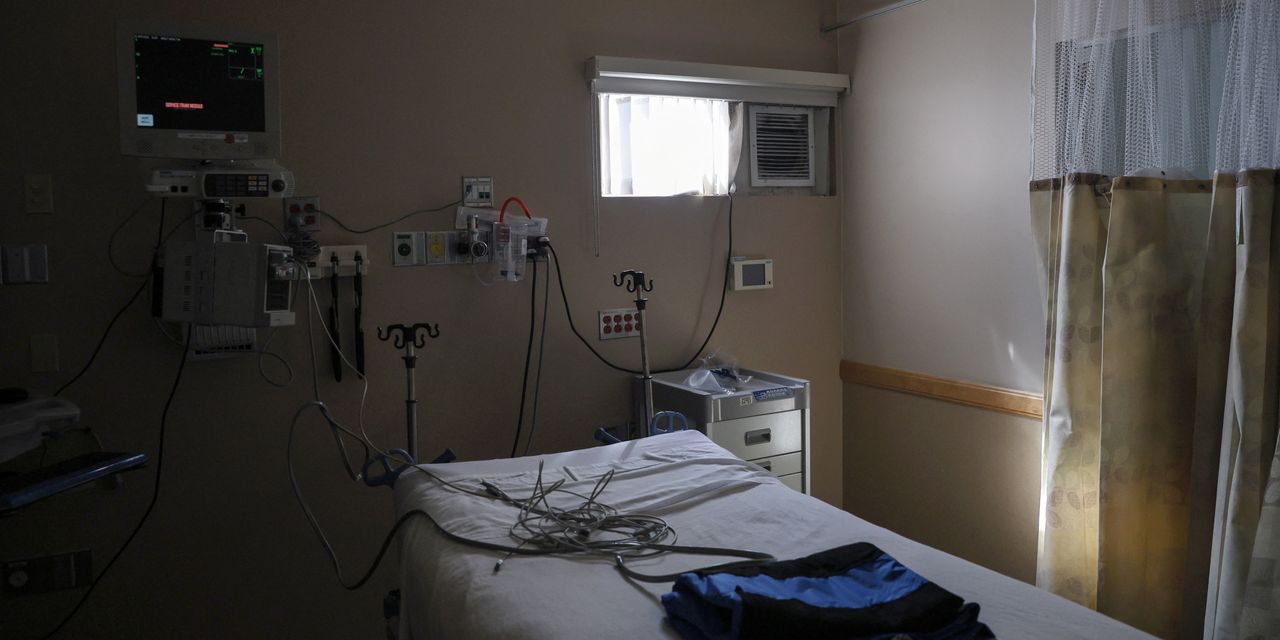[ad_1]
Premiums for many Affordable Care Act health-insurance plans are set to rise sharply next year, a sign of how rising labor costs and other expenses are starting to ripple through the healthcare economy.
Consumers, who generally can begin signing up for plans on Nov. 1, probably won’t feel much impact because of enhanced federal subsidies, but small employers are likely to face the brunt of higher rates because they don’t get similar government help, according to health-insurance specialists.
SHARE YOUR THOUGHTS
How can businesses prepare for rising health- insurance premiums? Join the conversation below.
Insurers on the ACA marketplaces are proposing median monthly premium increases of 10%, according to a Kaiser Family Foundation review of proposals made by 72 insurers in 13 states. Some insurers are seeking rate increases as high as 20%.
The proposed increases vary widely among insurers and markets. Also, state regulators don’t always approve the full increases sought by insurers.
Insurers generally propose rates to state regulators, which have different timelines for reviewing and approving them. The federal government is expected to certify ACA plans in early October.
The increases reflect factors such as higher prices for medical services, which hospitals and other healthcare providers are seeking so they can cover their own growing labor and other costs, according to actuaries and insurance-company regulatory filings.

Steeper costs for medical services are driving some of the increases proposed for premiums for many ACA health-insurance plans.
Photo:
Shannon Stapleton/REUTERS
“It’s labor, but also supplies. The cost of everything is going up,” said Debbie Ashford, chief actuary for health solutions at the North American unit of Aon PLC, a health consultant and insurance broker.
Many consumers won’t pay more because Congress extended expanded premium financial help through 2025 as part of the Inflation Reduction Act enacted in August.
The law preserved a 2021 expansion of subsidies that for the first time enabled individuals to be eligible for subsidies if they earn more than four times the federal poverty level, or about $54,000 for an individual and $110,000 for a family of four. Previously under the ACA, individuals earning more than four times the poverty level had been barred from subsidies.
The enhanced subsidies mean most of the 13.8 million people who are enrolled in an exchange plan will see what they pay out of pocket toward their premiums hold steady, said Cheryl Fish-Parcham, director of private coverage at Families USA, a consumer health-advocacy organization. Many will be cushioned from premium increases, she said.
The additional help means about 13 million of the people covered under the ACA will save $800 a year from what they would have had to spend without the extended subsidies, according to the Biden administration. The average monthly premium was $133 in 2022 after subsidies, according to the Health and Human Services Department.
“Small businesses will get hit the worst,” said Larry Levitt, executive vice president for health policy at the Kaiser Family Foundation, because they lack the bargaining power that larger companies have during negotiations with health insurers.
Bob Jennings, chief executive of 3D Color, a Cincinnati maker of prototypes for consumer goods brands with 21 employees, said he was looking at rate increases in 2023 of 14% to 23%.
Mr. Jennings said, though, that he didn’t want to stop offering benefits in such a competitive labor market. Instead, he said, the company passed on a 3% premium increase to employees, while agreeing to cover their costs exceeding the out-of-pocket maximum.
3D’s health-insurance plan ended in August, so the company recently went through the process of signing up for a new year. Most smaller businesses have health plans that renew at the end of the year, but some have plans that start in any month, said Gary Claxton, a senior vice president at the Kaiser Family Foundation. He said companies that have open enrollments in the fall would be starting to hear soon if not already, so that they have time to decide what to do.
Insurers that sell plans on the small group market to employers with 50 or fewer employees have requested rate increases for 2023 that range from 2% to 15% in Minnesota, according to federal data.
Requested rate increases for the small group market in Florida range from about 4% to almost 12%. In New York, insurers are requesting rate increases for plans that range from 11% to 46%.

The rising costs of medical supplies are contributing to higher proposed prices of many ACA health-insurance plans.
Photo:
EMILY ELCONIN/REUTERS
Small employers aren’t required by the ACA to provide health insurance, so rising rates raise the risk that some could drop coverage, according to Moody’s Investors Services.
The Biden administration is preparing for open enrollment, awarding $98.9 million in grants to navigators that help individuals sign up for health insurance on the ACA.
Enrollment in ACA plans could swell if the administration ends the pandemic public-health emergency in 2023, according to health-insurance specialists. The process of checking whether current enrollees remain eligible for Medicaid has been halted during the declaration. Millions of people are expected to lose Medicaid coverage once the eligibility verifications begin again.
The current public health emergency is scheduled to end on Oct. 13, and the Health and Human Services Department has said it would give states 60 days notice before ending it. So far, some state officials have said they haven’t received any notice.
Write to Stephanie Armour at Stephanie.Armour@wsj.com and Anna Wilde Mathews at Anna.Mathews@wsj.com
Copyright ©2022 Dow Jones & Company, Inc. All Rights Reserved. 87990cbe856818d5eddac44c7b1cdeb8
[ad_2]
Source link


